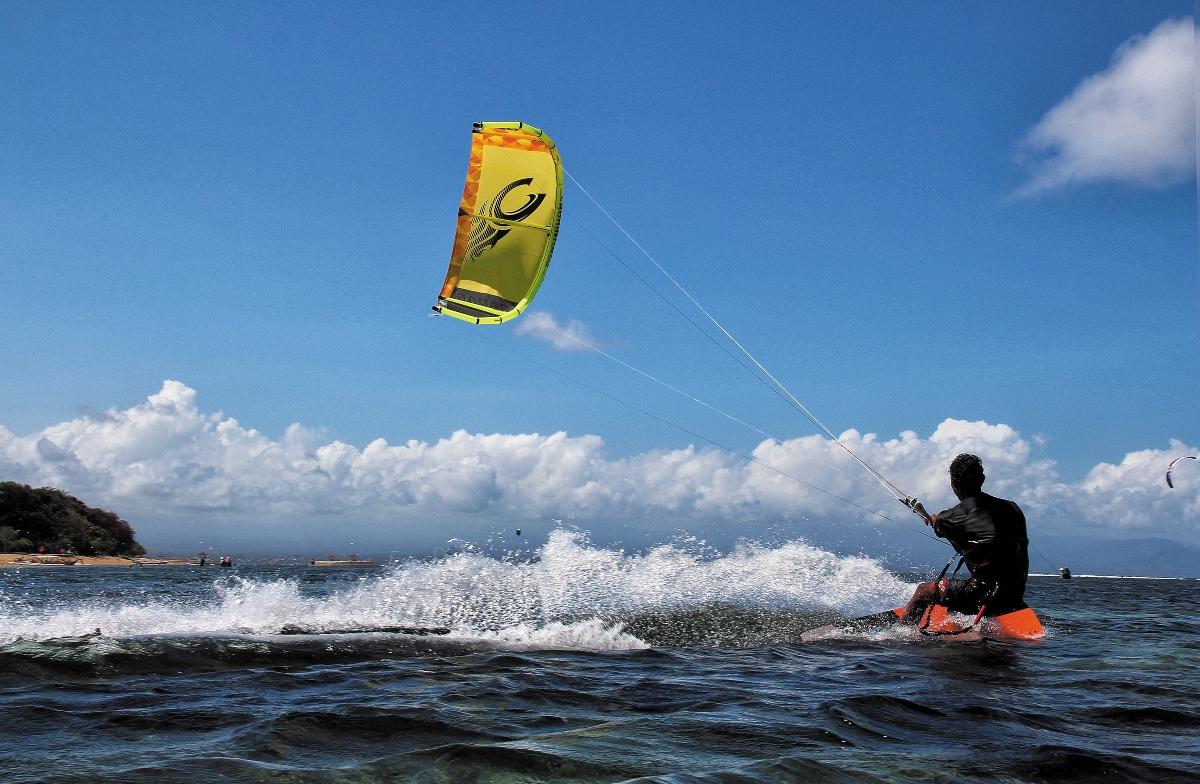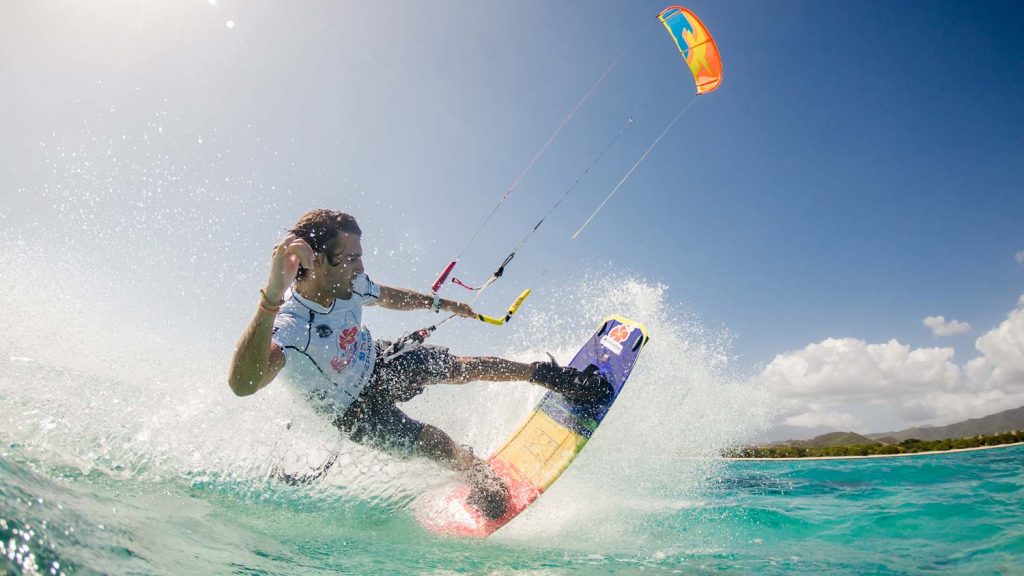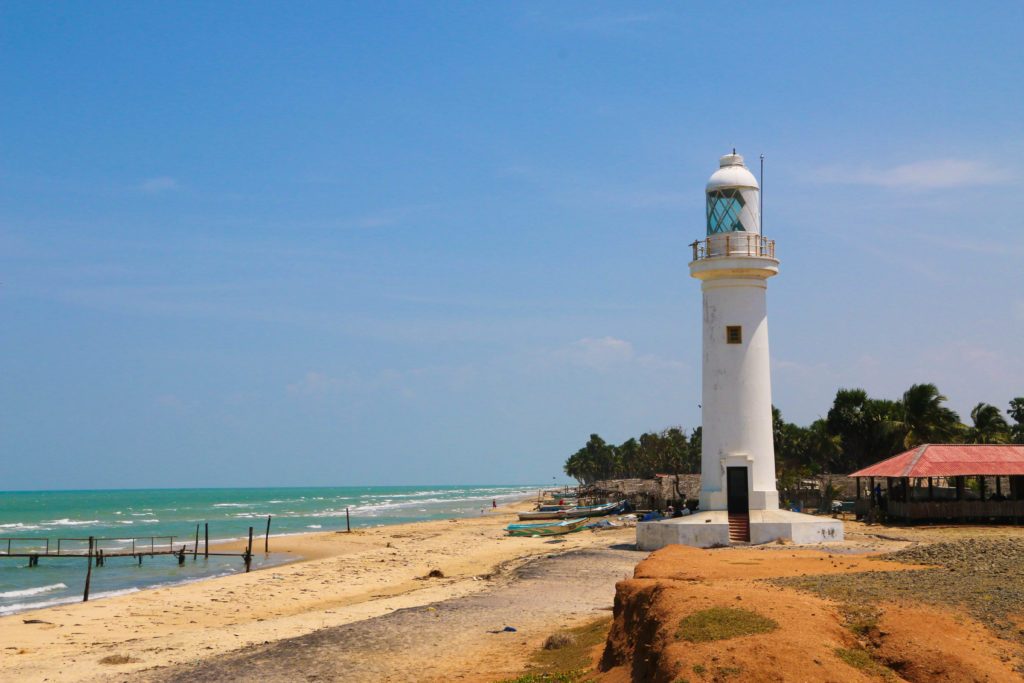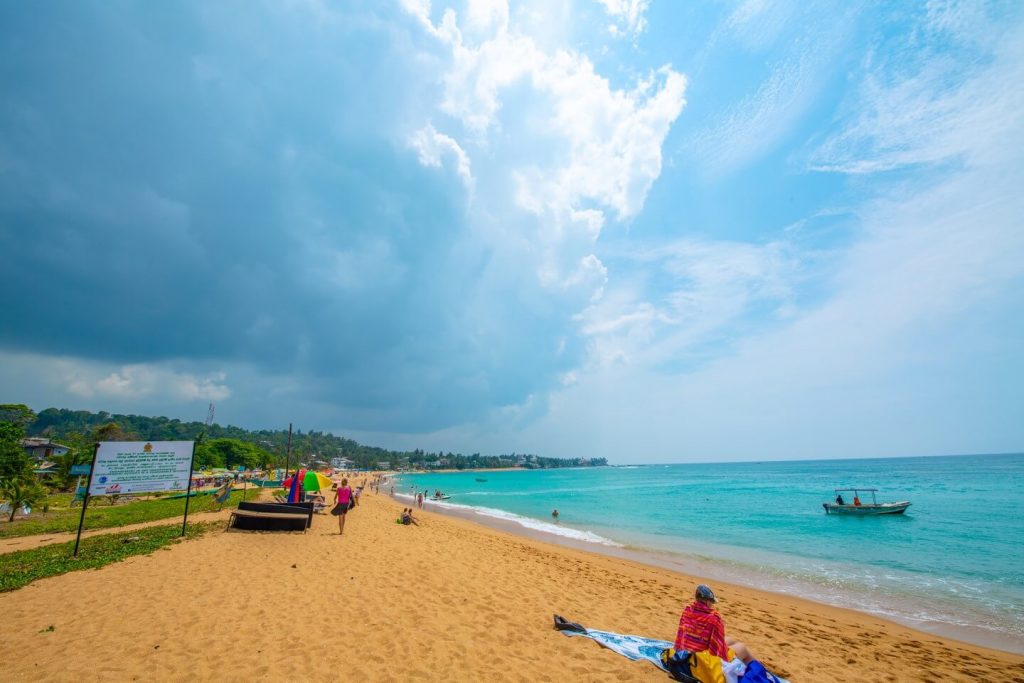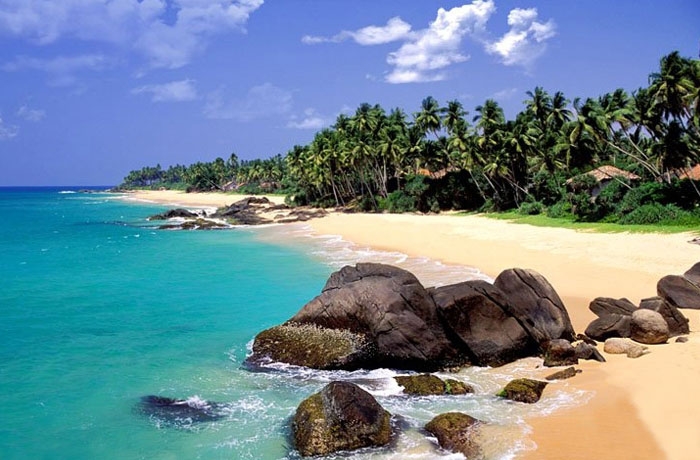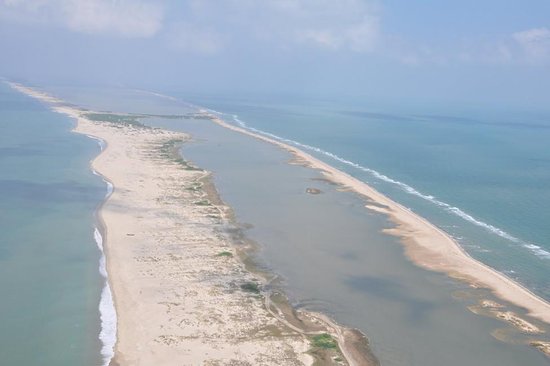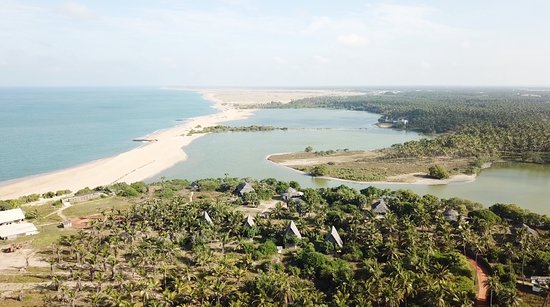Looking for a kitesurfing adventure? Choose kitesurfing in Sri Lanka and we guarantee, you will not be disappointed. Whether you are a beginner, intermediate or an expert, Sri Lanka offers something for everyone – flat water, waves and lagoons.
With Sri Lanka being one of the most exotic kitesurfing destinations, we have put together a detailed guide with everything you need to know about kitesurfing in Sri Lanka.
The best part about a holiday in Sri Lanka is that you won’t just be enjoying kitesurfing, there are several other adventurous, cultural, and natural excursions that the country has to offer. From wildlife encounters at national parks, diving excursions, whale and dolphin watching, white water rafting, hiking within the beautiful mountains, chilling on an exotic beach destination, exploring historical temples and ruins, or simply enjoying an ayurvedic massage amidst a calm and peaceful surrounding, Sri Lanka has it all!
In addition to these popular tourist destinations, Sri Lanka also has some exceptional luxury hotels to pamper our guests during their stay. So, whichever part of the island you choose to kitesurf in, you will definitely have a handful of luxury accommodation to pick from!
What is Kitesurfing and how does it work?
While some may be clueless about the sport, some may have their life built around kitesurfing! For the newbies, you may have witnessed this sport on a beach vacation, or maybe seen it on the internet, you are probably wondering how these guys are dangling in the air under a big parachute?!
Basically, kitesurfing is a thrilling watersport that involves standing on a surfboard, having a waist harness strapped around you, and being pulled by a large kite, about 25 meters in the air. Sounds unbelievable? Well, believe it because there are several thousands of people practicing kitesurfing every year!
How does this sport work?
As you gain speed with your surfboard, you generate more lift, which makes you hover above the water. With your balance you can then manage to glide around with very little drag on the water; giving you the feels of riding on a magic carpet.
Foil boards are a recent development in kitesurfing, which have proved to be very efficient in lighter wind conditions, allowing people to enjoy the sport more often. The water particles flowing above and below the foil wing pretty much lift you above the water in the same concept that air particles around your kite lift you in the air.
Why is Sri Lanka the perfect destination for kitesurfing?
Sri Lanka is an ideal year-round kitesurfing destination, being that it holds the best winds in all of Asia throughout the months of May-October and December-March; which is about 10 months of ideal winds every year.
Sri Lanka qualifies as one of the champions of the world when studying wind statistics and kite seasons. The country proves to offer excellent wind conditions where surfers can learn and progress at any level. In the summer season, hot winds come from the Middle East, striking into the western coast of Sri Lanka. And in the winter, winds from Southeast Asia hit Sri Lanka, creating thermal winds ideal for kitesurfing. As you can see, this is why summer presents powerful winds and winter presents lighter but steadier winds in Sri Lanka. As a result, Sri Lanka’s popularity as a kitesurfing destination is growing fast.
What time of the year is the most suitable for kitesurfing?
- The main kitesurfing season in Sri Lanka runs from May to September, during which constant and reliable wind conditions can be seen. Presenting exciting kitesurfing adventures, the wind rises between 18 and 30 knots during these months.
- There is also a winter season from December to March, which is a festive season to be in Kalpitiya because the wind won’t let you down. Although the wind force could drop a little during these days, you can still experience steady winds from 14 to 20 knots.
What are the best places for kitesurfing in Sri Lanka?
1. Kalpitiya Lagoon
Kalpitiya is widely known as the main destination for kitesurfing in Sri Lanka. The lagoon here is famous for shallow, flat waters and strong winds. Free riders, wake style kiters, and beginners have got quite accustomed to this spot. During the peak season, winds blow as strong as -25 knots average- on this lagoon.
2. Kappalady Lagoon
About 16kms south of Kalpitiya is the Kappalady lagoon which is just waist deep and has flat waters, making it ideal for beginners. The wind here is similar to Kalpitiya but less gusty as nothing obstructs its direction of exposure. You could base yourself in Kalpitiya and arrange a day tour to try kitesurfing on the Kappalady lagoon.
3. Ippantivu island
Still in its discovery stage with very few kiters in its vicinity, Ippantivu Island is an incredible and authentic Kitesurfing spot in Sri Lanka. Located in the center of Puttalam Lagoon, this spot has recently been named as ‘mini vella’, due to its similarity to Vella Island (described below). A 30-minute boat ride from Kalpitiya will bring you to Ippantivu Island, which is a kitesurfing excursion organized by some kite schools. Its location makes Ippantivu a very windy kitesurfing spot because of the venturi effect that exists. Whiz past the choppy area between the island and the Dutch Bay to feel the strong winds in the middle of the channel.
4. Mannar Island
Mannar Island is off the northwest coast of Sri Lanka and sits between Sri Lanka and mainland India. Adam’s Bridge is Sri Lanka’s new kitesurfing dream spot – an underwater limestone shoal that trails between the two mainlands. The strong and stable winds, along with the crystal-clear waters creates a unique spot where you can see your kite glimmering below you. There is about 20 square kilometers of area for kitesurfing, making it plenty for guests to explore.
5. The Dream spot
As its name suggests, the dream spot offers you plenty of space to surf, with flat water and ideal winds all year round. Located in the Dutch Bay, about 15-20 minutes from Kalpitiya, the Dream Spot is the one location in all of Sri Lanka that will have steady wind conditions and flat waters at any time of the year, and will not disappoint a kitesurfing addict!
6. Vella Island
A crowd favorite for downwinders and day excursions, Vella Island is a 30-minute drive and a one hour boat trip northwards from the coast of Kalpitiya. The location is quite out of the way but of course, the stable winds and flat waters makes the journey worth it. The island has an easy-to-access launch point, which is the perfect start for a downwind route. One thing to be aware of on Vella Island is that it is a popular fishing beach so there may be sharp bone pieces and such on the beach; protect your kite and feet from these.
7. Arugam Bay
On the east coast of Sri Lanka, Arugam Bay is often known as the surfer’s paradise. With the right wind conditions, it also becomes a fantastic location for kitesurfing. The Point is the best place to be kitesurfing in Arugam Bay because there is a reef creating clean waves that break for 200-300 meters and wind blows cross shore as opposed to offshore in most of the other places of this beach. Arugam Bay may be slightly complicated for amateurs but for intermediates and experts, this is a great place to be.
8. The Navy Point
The Navy Point is ideal for kitesurfing during the winters (December to March), but not so much in summer season as the wind gets very choppy. Located at the end of Dutch Bay, it takes about 40 minutes to get to Navy Point from Kalpitiya Lagoon. Also, surfers should note that this spot is perfect for a downward trip to the Dream Spot during winter season.
9. The Donkey Point
Wave raiders will love the Donkey Point kite spot in Kalpitiya for kitesurfing in the Indian Ocean. Located in a cape about 10kms south of Kalpitiya, this spot can be reached by car, tuk-tuk or motorbike. Once you get to the Donkey Point, you will find steady and strong winds if you are visiting during both kitesurfing seasons in Sri Lanka. the cross-onshore stable winds make this place very safe for kitesurfing, but is not advisable for beginners because of the unfavorable the ocean conditions.
10. The Southern Coast of Sri Lanka
Some of the most beautiful and touristic beaches are located on the southern coast of Sri Lanka, which is also rich in terms of facilities and social life. But just like there are pros and cons for everything, this coast lacks the ideal winds for kitesurfing.
While surfing is very much possible along the southern coast, winds for kitesurfing are only enough during the afternoon. The good news is that it is possible to find some days with perfect combinations of light consistent winds and friendly waves to fulfil your desire for kitesurfing.
With light wind conditions ranging from 10-16 knots, I kites are most ideal during the winter season in the following southern coast locations of Sri Lanka:
- Tangalle
- Matara
- Ahangama
What is the most suitable kites for kitesurfing in Sri Lanka
If you are making travel plans during the winter season, kites from 12-16 meters are required and if you are travelling during the summer season, 7-10 meter kites are best. The kite size also depends on your weight; sometimes winds could go up to 30 knots in the summer, so you have to be prepared; you don’t want to fly away with your kite!
During the winter season, consistent winds of about 14-18 knots are experienced. If you have the chance to bring a kite smaller than 12 meters in the winter, do bring it because sometimes 20-25 knots of wind are possible even in the winter.
Kitesurfing tips for beginners
- The average water temperature during the high season is at 29 Degrees Celsius. A wetsuit is not recommended as it is quite hot in Sri Lanka; board shorts, bikini and/or a light vest should suffice.
- It is important to carry a sunscreen, plenty of water, shoes or booties, and that’s about it!
- If you are new to the sport, there are several schools set up in Kalpitiya, making this the most convenient location for kitesurfing lessons and camps in Sri Lanka.
- Kiting in Kalpitiya means the wind will build in strengths throughout the day. So, beginners who prefer less wind should head out in the morning while the more experienced riders should hit the water in the afternoon.
Exciting downwind trips for Kitesurfing in Sri Lanka
Want a rush of adrenaline during your kitesurfing adventures? Here is a list of the most exciting downwinds you can try!
| Season | Route | Duration (approx.) | Level |
| Summer | Dream Spot to Ippantivu Island (Puttalam Lagoon) | One hour | Intermediate |
| Summer | Kappaladi Lagoon to Donkey Point and the Kalpitiya Lagoon (Indian Ocean) | One and a half hours | Expert |
| Winter | Navy Point to Dream Spot (Puttalam Lagoon and Indian Ocean) | One hour | Expert |
| Winter | Vella Island to Dream Spot (Puttalam Lagoon and Indian Ocean) | One hour | Expert |
Where to stay while kitesurfing in Sri Lanka?
Kalpitiya is the perfect starting base for all your kitesurfing adventures in Sri Lanka because most of the popular riding locations are around Kalpitiya. Here are some of the best accommodation options during your stay in Kalpitiya, Sri Lanka:
- Wind Blend Kite Resort
- Dolphin Beach Resort
- Khomba Beach House
- Kodev Kalpitiya
- Blue Whale Resort
- Hiru Resort
- Ocean View Beach Resort
- Melheim Beach
- Atara Lagoon
- Majestic Beach Retreat
Arugam Bay is known for budget friendly motels such as Beach Wave Hotel, Water’s Edge Hotel, Forcus Cabanas, The Bay, and so on. But if you are looking for luxury accommodation, a good option is to base yourself at one of the many five-star resorts in Passikudah and then plan an excursion to Arugam Bay for kitesurfing.
Along the southern coast, the options are indeed endless! Anantara Tangalle is a must visit, while Ahangama has several options such as Insight Resort, Oasis Villa, W15, The Sandhya, and Harding Boutique Hotel.
Conclusion
With the holiday season coming up and everyone looking for a much-awaited travel break, choose Sri Lanka to enjoy the winter season kitesurfing as well as other world-renowned tourist attractions in Sri Lanka, while pampering yourselves at the exclusive holiday resorts scattered across the country.

